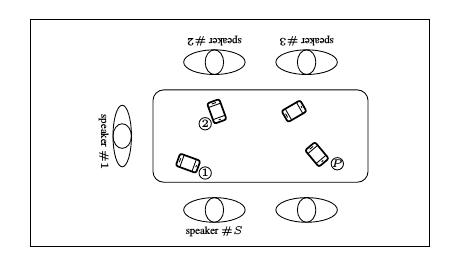The Problem

Consider a meeting scenario with several participants carrying mobile devices with one or more microphones. Mobile devices placed on a table can be connected to form an ad-hoc network of microphones. We address the diarization task, i.e., "Who spoke when?" in the meeting recordings comprising of multiple sources and signals recorded in such an ad-hoc microphone array network.
Such a setup is characterized by (i) random placement and orientation of mobile devices, (ii) asynchronous recording across the mobile devices, (iii) synchronous two-channel recording at each mobile device, and (iv) variability across the devices with respect to the number, type, and arrangement of the microphones on the mobile device.
